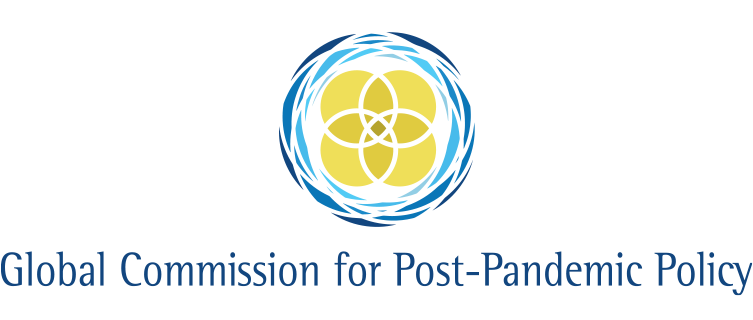Research Monitor
March 29th 2021
Health
The performance of mRNA vaccines
A new paper published by the United States Centre for Disease Control and Prevention (CDC) reports the findings of a study investigating the effectiveness of mRNA-based COVID-19 vaccines under real-world conditions.
The two messenger RNA (mRNA) COVID-19 vaccines currently on the market—Pfizer-BioNTech and Moderna—both reported extremely high efficacies (approx. 95%) in preventing symptomatic COVID-19 in randomised, placebo-controlled clinical trials. However, performance under real-world conditions might in principle be different.
To test this, a team of CDC researchers led by Mark Thompson, Jeffrey Burgess and Allison Naleway recruited a cohort of 3,950 health care personnel, first responders and other frontline workers without prior infection with COVID-19. Of these, 2,479 (62.8%) received two doses of an mRNA vaccine, 477 (12.1%) received a single dose and 994 (25.2%) remained unvaccinated. Of those vaccinated, 62.7% received jabs of the Pfizer-BioNTech vaccine, 29.6% received jabs of the Moderna vaccine and the remaining 7.7% received vaccines still in clinical trials. The participants then performed a self-administered RT-PCR COVID-19 test once-a-week for thirteen weeks.
The results were encouraging. Among unvaccinated participants, 1.38 SARS-CoV-2 infections were reported per every 1,000 person-days. For partially vaccinated participants, 0.19 infections were reported per every 1,000 person-days. Finally, for fully vaccinated participants, 0.04 were reported per every 1,000 person-days. This translates to a real-world efficacy of 90% for a full two-dose regime of an mRNA vaccine (from 14 days after the second dose), and 80% for a single dose regimen (from 14 days after the first dose).
The results confirm that both the Pfizer-BioNTech and Moderna vaccines are also highly effective at preventing COVID-19 infection in real-world conditions.
The role of oral tissue in SARS-CoV-2 infection
A new paper published in Nature Medicine reports the results of a comprehensive study on the role of oral tissue in COVID-19 infection.
The role that the upper and lower respiratory tracts play in SARS-CoV-2 infection is well documented, but despite signs of oral tissue infection—including taste loss, dry mouth and oral blistering—the role of the oral cavity in the disease COVID-19 remains little understood. To shed some light on the matter, a team of researchers led by Ni Huang from the Wellcome Trust, Paulo Pérez from the American National Institute of Health (NIH), and Takafumi Kato and Yu Mikami from the University of North Carolina performed a cascading series of experiments.
The team started by surveying the oral tissue of five healthy individuals for signs of the existence of mouth cells susceptible to infection with SARS-CoV-2. To infect a cell, the coronavirus needs two entry proteins—called ACE2 and TMPRSS2—to be present on the surface of the cell. For the first time, the team confirmed that both surface proteins are present in oral tissue, especially in the salivary glands.
The team then sequenced salivary gland tissue from patients that had recently died from COVID-19. In over half of the tissue tested, genetic material from SARS-CoV-2 was identified, confirming that this heightened cellular vulnerability translates into infection. It is well-established that the saliva of COVID-19 patients can carry a strong concentration of virus molecules. In an additional experiment, the team confirmed that infection of oral tissue is most likely the cause.
Finally, the team sampled the saliva of 27 NIH volunteers with COVID-19. The researchers found that those with a high concentration of the virus in their saliva—suggesting infected oral tissue—were more likely to report a loss of taste and smell. The result is the strongest evidence yet for a mechanism behind the loss of taste and smell in COVID-19 patients.
Economics
A new paper published in the March 23rd issue of the Centre for Economic Policy and Research (CEPR) publication COVID Economics investigates the relationship between the levels of inequality in a country and its levels of mortality in the COVID-19 pandemic.
That disadvantaged minorities and some low-income groups continue to be disproportionately impacted by COVID-19 infection and mortality hints at the possibility that the severity of the COVID-19 pandemic within a country is linked to its degree of socio-economic inequality. To test this hypothesis, James Davies of the University of Western Ontario used data on 141 countries to model the relationship between a country’s Gini coefficient (a measure of income inequality) and its COVID-19 deaths per million during the pandemic’s first wave. The latter was defined as the 150 days following the tenth confirmed COVID-19 case in a country.
The analysis suggests that income inequality is a strong predictor of a country’s health performance, with less equal societies performing notably worse. As an illustration, other things equal if the Gini coefficient in all countries in which it is above the G7 median was instead lowered to that median, 89,900 fewer deaths would have been expected in the first 150 days of the pandemic—the equivalent of a 14% drop. Further research would be required to establish the causal process here, but the correlation between inequality and high mortality rates is strong.
GCPPP Newsletter
We now publish a weekly newsletter to inform friends and supporters of the Global Commission’s progress and to provide updates when new content is published. Please sign up here:








